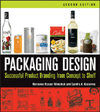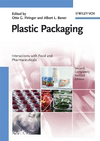FPA Update
FPA Holds Successful Fall Executive Conference








The Flexible Packaging Association recently held its 2018 Fall Executive Conference at the InterContinental in Chicago, Illinois. The conference was preceded by the association’s Board of Directors and Executive Committee meetings. This issue of the FPA Update highlights some of the presentations.
FPA Consumer and Brand Owner Sustainability Study
FPA commissioned G&S Business Communications to conduct the Consumer and Brand Owner Sustainability Study to better understand their perspectives on packaging and sustainability. The study integrates insights from brand owners (349) surveyed online in June 2018 by Packaging World and insights from an online survey of consumers (2,012 U.S. consumers, ages 18+) conducted by Harris Poll in July 2018.
The key objectives of the study were to understand what sustainability means to consumers and the importance of sustainability overall and relative to packaging; consumer understanding of packaging-related sustainability attributes; and opportunities for education that drives consumer purchasing decisions. The study was also conducted to help understand how brand owners are addressing sustainability; the extent to which sustainability is a part of business goals; how brand owners think consumers perceive sustainability; and what are the barriers and opportunities for growth.
The study found that consumers believe that sustainability is important. In general terms, 86% of consumers surveyed by Harris Poll say that they care about sustainability and 78% say that they support or purchase from businesses with sustainability initiatives. In regards to packaging sustainability, 82% of consumers say that they care about the sustainability aspects of packaging, while 79% say that they prefer products that are in sustainable packaging over products that are not.
Consumers also say that they care about sustainability, but don’t always take action. Only 27% of consumers say that they always or actively seek out products in sustainable packaging, while 21% say they always or often pay more for products in sustainable packaging. Many consumers (68%) have grown skeptical of sustainability claims and 30% say they are tired of hearing about sustainability.
Based on the results of the study, however, there is an opportunity to elevate the visibility of specific sustainable manufacturing processes and supply chain concepts in the sustainability conversation among consumers, thereby addressing the skepticism and consumer fatigue.
There is particularly a great opportunity to clearly communicate the value of the full lifecycle impacts of flexible packaging to Millennials, especially as they drive packaging trends in the future through increased buying power and influence. Millennials are more likely to think that full lifecycle impacts are important (i.e., carbon impact, fossil fuel usage, water usage, product-to-package ratio, and the amount of packaging material going to the landfill). Millennials are also more likely to check packaging labels for sustainability information, actively seek out products in sustainable packaging, promote the benefits of sustainable packaging to others, and pay more for products in sustainable packaging.
Brand owners are becoming more sustainable and believe that new technologies and processes will drive trends, such as bio-based materials/structures, biodegradable packaging, increased recycled content, and compostable packaging.
In the quest to become more sustainable, brand owners are running into barriers such as the failure to identify packaging alternatives of equal or less price/quality, competing organizational priorities of higher interest, and difficulty identifying opportunities for change.
This illustrates an opportunity to further inform brand owners about the specific operational and performance sustainability benefits of flexible packaging, as well as consumer interest in very specific sustainability attributes.
Update on FPA’s Advocacy Program and Trade Concerns Affecting the Industry
FPA President & CEO, Alison Keane, Esq., provided an update on FPA’s Advocacy Program and trade concerns affecting the industry.
For the International Trade Commission’s (ITC) case regarding claims that dumped and subsidized aluminum foil from China is causing or threating injury to the domestic aluminum foil industry, the final decision was made on March 15, 2018, in favor of the petitioners, resulting in anti-dumping and countervailing duties. The FPA Aluminum Foil Workgroup decided against appealing the decision.
The Department of Commerce (DOC) initiated a Section 232 investigation on the effect of aluminum imports on U.S. national security that paralleled the ITC investigation. As a result of that investigation, on March 1, 2018, a 10% tariff on aluminum was announced, then finalized through proclamation on March 8, 2018. Canada and Mexico were not exempted from the tariffs. FPA assisted members in filing waivers using information from ITC case.
Capitol Hill activities in relation to Section 232 have remained constant. FPA submitted a Statement on the Record for all hearings with regard to the tariffs and exclusion process, and continues to meet with various legislative members and staff. FPA will continue to conduct legislator site visits with FPA member companies and attend regional legislator committee meetings to voice its opposition to these tariffs.
Legislation is still pending in the House and Senate to curtail the unfettered powers of the President with respect to Section 232, as well as other trade powers. Questions still remain about whether the Section 232 and resulting retaliatory tariffs from Mexico and Canada will continue to be imposed should the new NAFTA agreement be ratified by Congress.
The trade war with China is based on theft of intellectual property. The war has escalated well past its primary purpose, and there are currently 3 lists totaling $250+ billion in goods affected, and a 4th list is pending. There is an exclusionary process for lists 1 and 2, but none for list 3. China instituted retaliatory tariffs totaling over $60 billion, with possibly more to come. FPA expanded the Aluminum Foil Committee to include all members affected by the trade wars to keep them apprised of the situation and provide updates.
FPA is continuing its State advocacy efforts. In California, there is a current reprieve from CalRecycle’s Packaging Reform Workshop’s proposed legislation and regulation of packaging due to the China National Sword program. FPA is requesting a total reset instead of just a delay. In Rhode Island, a new task force to “Tackle Plastics” was set up by Executive Order by the Governor. A report is due in February 2019, which will include possible legislation and regulations to eliminate sources of plastic pollution. FPA will continue its advocacy efforts in this state well ahead of the report.
Global Trends in Flexible Packaging
Tim Trovillion, Business Development Account Executive, from Euromonitor International, discussed global trends for flexible packaging. Flexible packaging is estimated to grow 11% by 2021.
- In Latin America, the performance of flexible packaging will continue on a positive level driven by multipack and economy products. Smaller presentations are growing across several industries due to reduced disposable incomes impacting consumer behavior in key markets. Sustainability is less of a driver compared to other regions, especially as convenience and affordability take precedence.
- In Western Europe, flexible plastics see strong growth in Turkey, as packaged food sales grow overall. Stand-up pouches see growth in nearly all markets, being viewed as easy to recycle and convenient. Minimizing environmental impact is an important concern for consumers, retailers, producers, and packaging players.
- In Asia Pacific, flexible plastic will remain popular as price-conscious consumers seek value for their money. In India, manufacturers are shifting to flexible packaging from traditional glass and metal packaging. Simplified versions of packaging for sale via internet retailing will become more common in connected countries (China, Japan).
- In Eastern Europe, movement towards less expensive packaging materials, such as plastic, is a consequence of challenging economic conditions in the region. Stand-up pouches will be one of the most dynamic packaging types, benefited by consumer perception as a practical, easy-to-use, and less expensive option. Ecological packaging is a growing trend in some markets driven by middle-class and urban consumers.
Flexible plastic will grow across the Middle East and Africa, replacing traditional packaging in key markets. Improving income levels and development of retail systems is increasing consumption of packaged foods and beverages overall. Flexible plastics is expected to grow at 5.14% Compound Annual Growth Rate (CAGR). Beauty and personal care, food, and home care packaging are expected to see over 5% CAGR.
In North America, flexible pouches see important growth in key food and beverage packaging categories. Plastic pouches will see a large forecast CAGR of 5.7%, adding nearly 2 billion units sold by 2020. Confectionary and processed fruits drive growth in flexible pouches, which offer convenient pack sizes for on-the-go snacking.
For More Information
To download presentations and videos from the FPA 2018 Fall Executive Conference, please visit the “Members Only” section of www.flexpack.org. For more information about FPA meetings and conferences, contact FPA at fpa@flexpack.org or 410-694-0800, or visit www.flexpack.org.
Looking for a reprint of this article?
From high-res PDFs to custom plaques, order your copy today!











